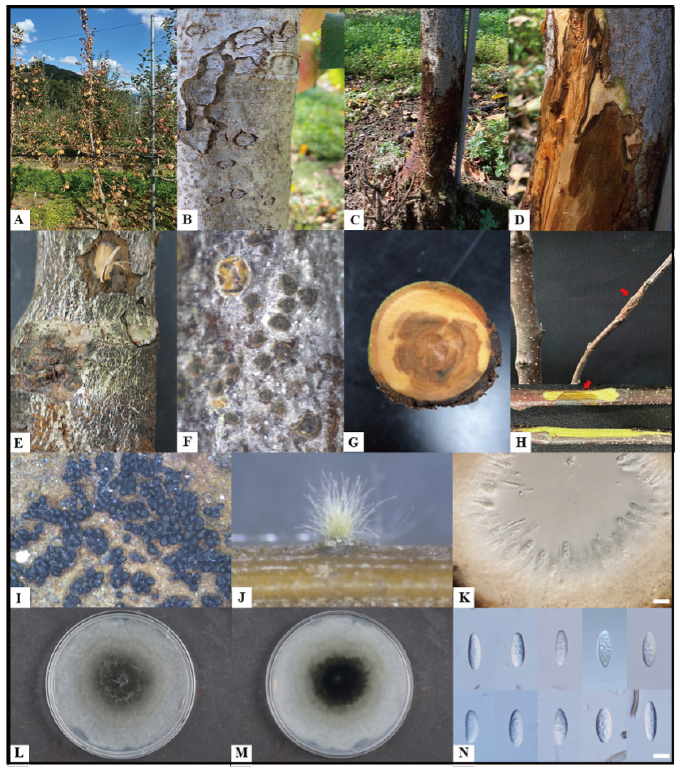Abstract
Apple decline symptoms were frequently observed on cv. Fuji apple orchards located in Gyeonggi, Gyeongbuk, and Gangwon provinces during surveys conducted from May until the end of September 2020. Three fungal strains were isolated from the margins of internal lesions of diseased apple trees, and their morphological characteristics were considered similar to Botryosphaeria sinensis. Phylogenetic analysis using internal transcribed spacer (ITS) regions, translation elongation factor 1-alpha (tef1), beta-tubulin (tub2), and the second largest subunit of RNA polymerase II (rpb2) gene sequences confirmed the closest relationship of isolates with B. sinensis at the species level. According to a pathogenicity test, the appearance of dark-brown discolorations and vascular necrosis on apple branches inoculated with the isolated strain KNUF-20-014 was observed. To the best of our knowledge, this is the first report of B. sinensis as the causal agent of apple disease in Korea.
Figures & Tables

Fig. 1. Natural apple decline symptoms caused by Botryosphaeria sinensis and description of the KNUF-20-014. A, declined apple tree; B, warts on a diseased tree; C and D, blackened trunk and observed symptoms inside; E and F, black dots on a diseased trunk; G, observed necrosis on the internal of a diseased tree; H, pathogenicity test result shows canker and necrosis on the inoculated branch of cv. Fuji and its internal symptom (red arrows indicate inoculated zones); I and J, pycnidia on a diseased tree and on pine needle agar (PNA) medium; K, cross-sections through pycnidium; L and M, colony on malt extract agar after incubation at 28℃ for five days (L, front; M, reverse); N, conidia (scale bar=10 μm).


